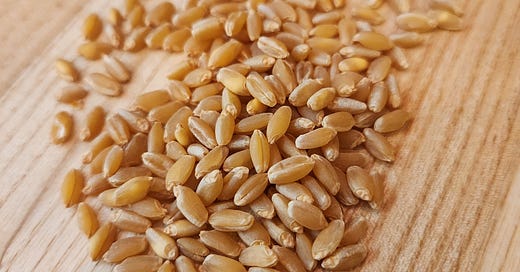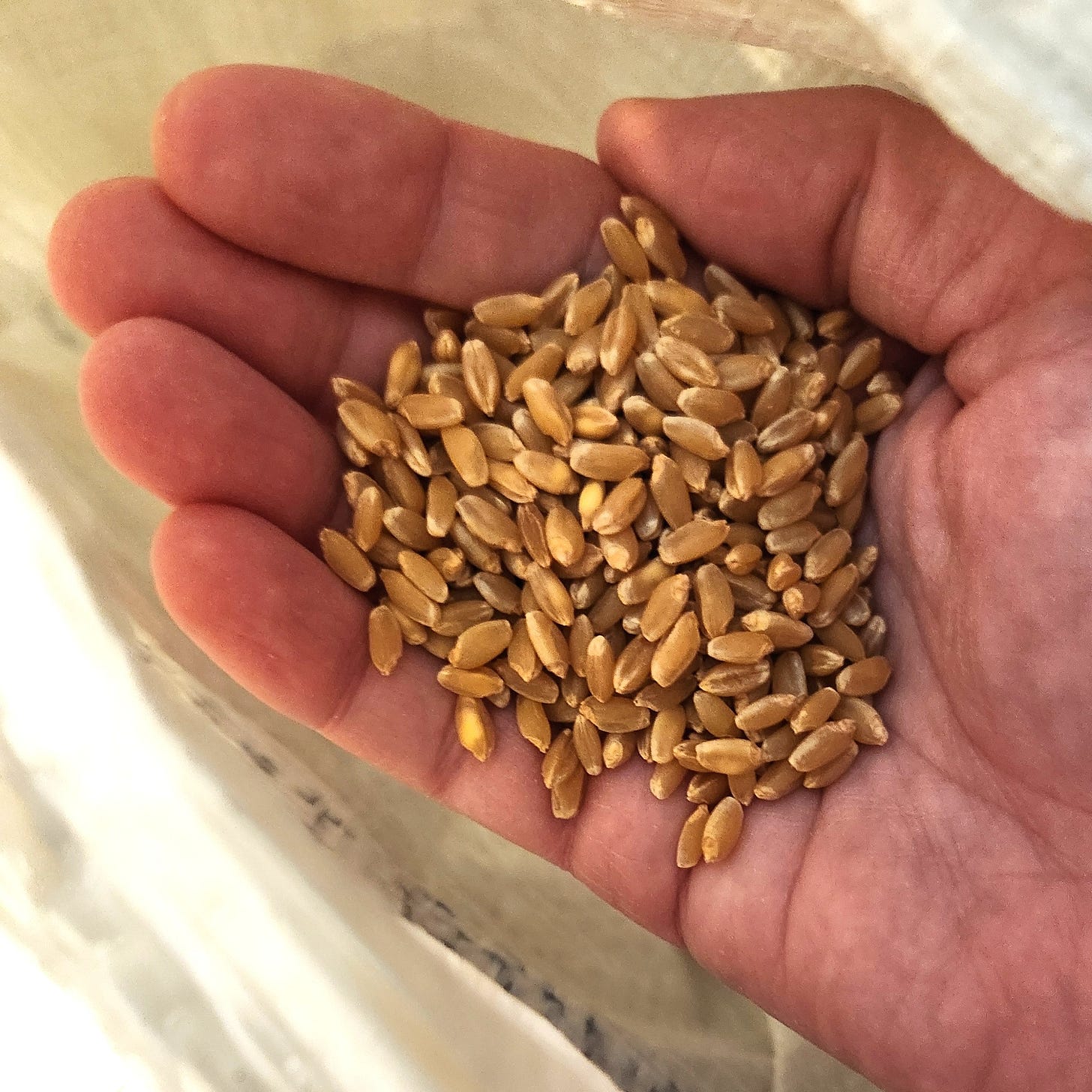What is Durum wheat?
Durum wheat is fundamentally different from the other types of wheat we’ve talked about so far. Common wheats have 42 chromosomes in total and are hexaploids, meaning they have six sets of chromosomes in their cells. These are the types of wheat that we talk about classifying as winter or spring, red or white, and hard or soft.
Durum wheat, however, is in its own class, separate from the common wheats. Durum wheat only has 28 chromosomes in total, and it’s a tetraploid, meaning it has four sets of chromosomes. There are other types of wheat in this category, but durum is the only varietal of tetraploid wheat grown commercially today. There are several types of durum wheat out there, such as Blue Beard and Desert Gold, but they all share a similar set of characteristics, and they all belong to the durum wheat group.
In many ways, durum is more similar to other ancient grains than it is to wheat. It’s a domesticated descendent of emmer that was first cultivated around 7000 BCE. Like many grains, it is believed to have originated in the Fertile Crescent. The name “durum” comes from Latin, and it simply, and fittingly, means “hard.”
Working with Durum Wheat
Durum wheat is so different from common wheat that the milled durum flour even has its own name: semolina. Semolina is a beautiful yellow color, and it’s similar in texture to cornmeal in that when milled finely, the particle size is very small, yet you can still feel the hard individual particles between your fingertips. As with most wheats, hardness relates to protein content, and durum wheat is very high in protein.
Semolina is the type of flour most dry pasta and some fresh pasta is made from. For this reason, semolina is usually associated with Italy, and it’s also frequently used in Italian breads, although it’s usually mixed with common wheat flour for that sort of application. That’s because even though semolina has a high protein content, it just isn’t great at developing the type of gluten strands needed to capture air and make bread rise. Rather, semolina is known for its floral flavor and unique texture that is best described as al dente, much like the pasta made from it.
Another common use for semolina is as a coating on the bottom of hearth breads to prevent them from sticking to various surfaces. Semolina can be used as a non-stick barrier between a just-shaped baguette and the couche that it proofs in. It can also be sprinkled on the sticky bottom of a loaf that’s been proofing in a banneton just before the baker turns the loaf out to bake it. This non-stick barrier keeps the dough from sticking while the baker scores the loaf and loads it into the oven.
Semolina can also be used in many desserts, and its texture makes baked goods dense in the best way. It can stand up to high hydration batters and doughs, and it provides baked pastries with a unique crumb and solid structure without making them gummy. Semolina pudding is common in Greece, Basbousa and Revani are semolina cakes common in the Middle East, and citrusy olive oil semolina cakes are common here in the U.S.
The Environmental Benefits of Growing Durum Wheat
Durum wheat can outperform common wheat in areas of limited water supply, which is a real asset where water is increasingly scarce. It likes a lot of sun and can handle the temperature swings between hot days and cold nights. The root systems of durum wheat aerate the soil and improve its ability to absorb water. Interestingly, the straw from durum wheat is also a great source of food for livestock, and it is more nutritious than straw from common wheat according to many benchmarks.
Among the scientific community, there is concern about what impact climate change will have on our ability to grow durum wheat. Even now, farmers are seeing that climate extremes can impact the yields of their durum crops.
Why Durum Wheat is a Great Thing to Eat
Durum wheat is a source of vitamins B, E, and K, and minerals iron, copper, and zinc. It’s high in protein and fiber, and it has a low glycemic index. Many runners eat pasta made from semolina before a marathon as the carbohydrates it contains are a great source of sustained energy. Pasta, of course, is also a great thing to eat just because it’s delicious!
Part of the fun of eating durum wheat is knowing that humans have been eating this grain for millennia. Many of the foods made from it have hardly changed in all this time, meaning eating a bowl of pasta or a semolina cake connects us with our ancestors and to their ancestors too.
Baking With Durum Wheat
Commercially milled semolina is just the endosperm, meaning that the bran was removed in the milling process. But if you mill your own semolina, you can mill the entire durum berry for maximum flavor and nutrition. A unique characteristic of durum wheat is that the bran is about the same hardness as the endosperm, meaning you’ll end up with a uniform granule size in your semolina. When milling your own, you’ll likely want to run the durum wheat through your mill twice on the tightest setting to achieve the fine texture most recipes call for. While this extra step requires a little more time and effort, the results are worth it!
This week’s recipe is for simple Semolina Crackers that are an easy and delicious way to get experience working with semolina from durum wheat. Crackers are an excellent use for semolina because they are rolled thin and made using a process similar to that of pasta, but they require significantly less work. The al dente texture of the semolina gives these crackers a satisfying crunch, and a bit of common wheat flour gives them a complementary soft bite. This is a fast and easy recipe requiring only a rolling pin, and you can have fresh crackers to snack on in under an hour. Let’s get baking!






I'm looking forward to the recipe.